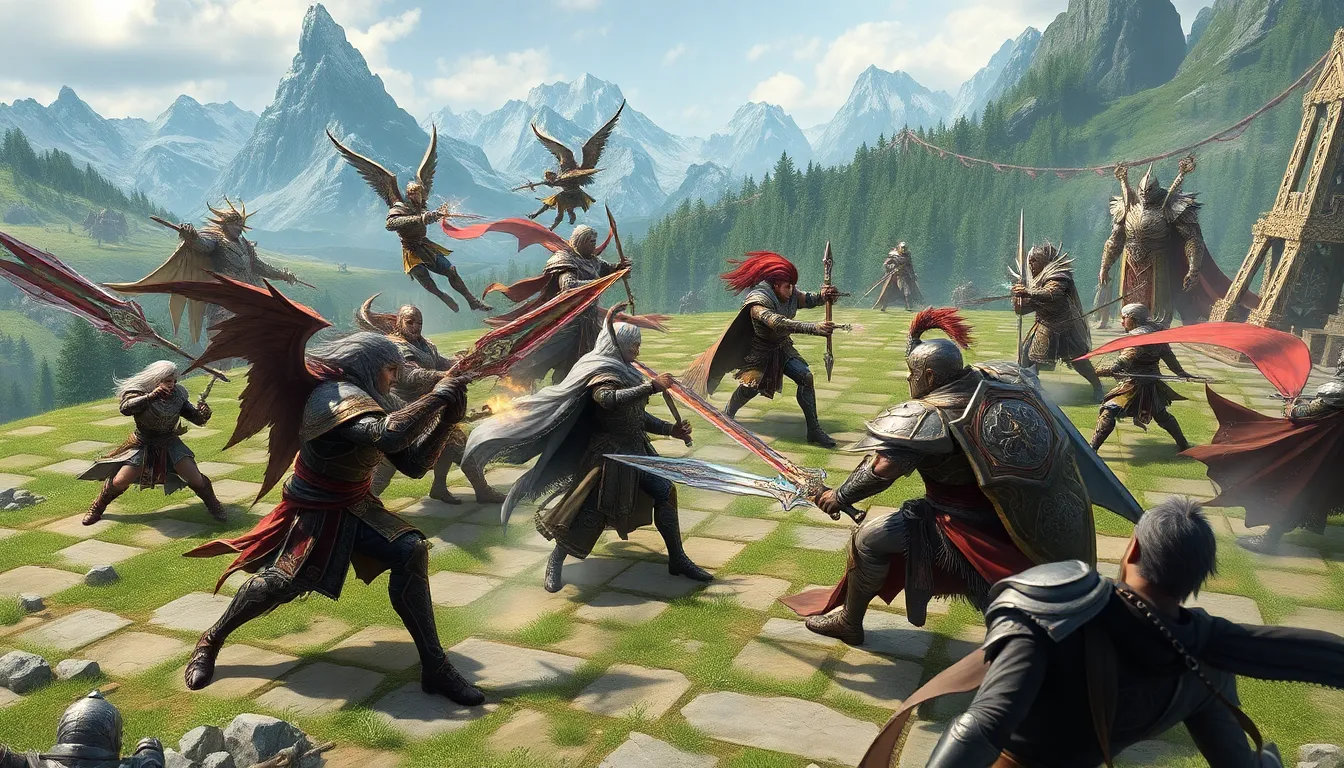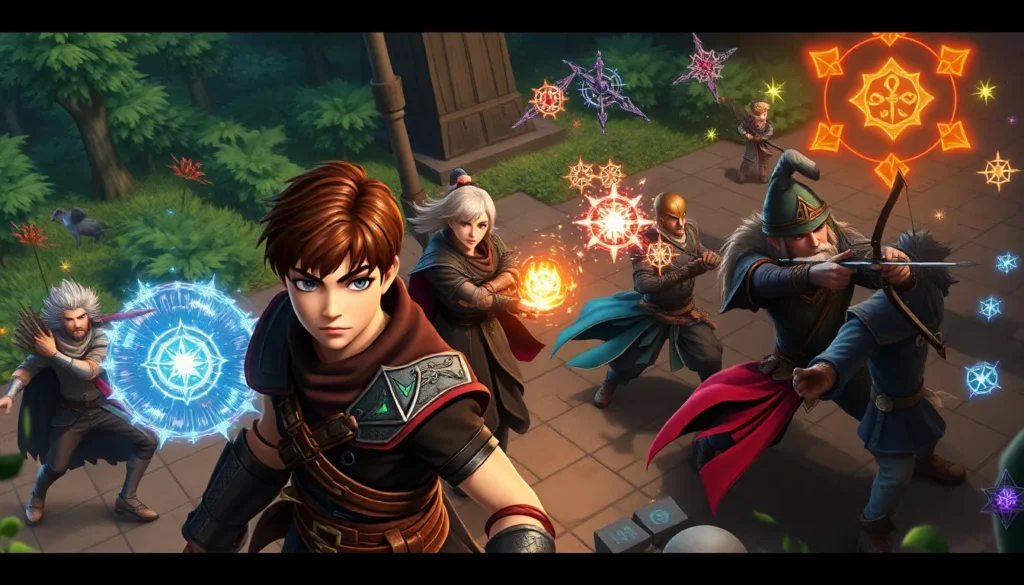In the realm of gaming, strategy RPGs stand out as a captivating blend of tactical gameplay and rich storytelling. These games challenge players to think critically while navigating intricate plots and character development. With deep mechanics that reward careful planning and foresight, strategy RPGs have carved a niche for themselves among enthusiasts who crave both action and intellect.
From classic titles to modern masterpieces, this genre offers diverse experiences that cater to various play styles. Players can immerse themselves in fantastical worlds, commanding armies and forging alliances while making choices that impact the game’s outcome. As the popularity of strategy RPGs continues to rise, understanding their unique appeal becomes essential for both newcomers and seasoned fans.
Table of Contents
ToggleWhat Is a Strategy RPG?
A strategy RPG, or role-playing game, blends tactical gameplay elements with immersive storytelling and character development. Players assume the roles of characters within intricate plots, using strategic thinking to navigate challenges. Character customization plays a key role, allowing players to enhance abilities and modify skills based on personal preferences.
Games in this genre often feature grid-based combat systems, where positioning and resource management are crucial. Players command units, plan their moves, and anticipate opponent actions, fostering a sense of investment in each decision. Choices made during gameplay affect not only individual battles but also overarching narrative outcomes.
The genre encompasses diverse settings, from fantasy realms with magical creatures to sci-fi universes filled with advanced technology. Each strategy RPG offers unique mechanics, such as unit types, skills, and special abilities, that deepen gameplay. This combination of tactical depth and rich narratives attracts players who appreciate thoughtful engagement and dynamic experiences.
Key Features of Strategy RPGs

Strategy RPGs offer distinctive elements that enhance gameplay and player engagement. Key features include tactical gameplay and character development, integral to the genre.
Tactical Gameplay
Tactical gameplay in strategy RPGs emphasizes strategic decision-making and combat efficiency. Players navigate grid-based environments, requiring precise positioning and movement for maximum effectiveness. Each turn presents opportunities, with characters able to execute a variety of actions such as attacking, defending, or using special abilities. Resource management adds another layer; players must effectively utilize items, health, and power resources to maintain an advantage. Anticipating opponents’ moves is crucial, as miscalculations can lead to significant losses on the battlefield.
Character Development
Character development serves as a cornerstone in strategy RPGs, allowing players to tailor their experience. Customization options facilitate the enhancement of skills and abilities based on play style and strategy. Players invest in attributes like strength, intelligence, and agility, refining characters to fit specific roles within a team. This development often includes leveling systems, where characters gain experience from battles, unlocking new skills and upgrades. The depth of character progression fosters emotional investment, as players witness their characters’ growth and evolution through challenging quests and encounters.
Popular Strategy RPG Titles
Various titles stand out in the strategy RPG genre, each offering unique gameplay experiences and storytelling depth. The following sections detail some of the most prominent games that define this category.
Fire Emblem Series
The Fire Emblem Series is a cornerstone of the strategy RPG genre, known for its engaging narratives and permadeath mechanic. Players navigate turn-based battles on grid maps, positioning units with different classes and abilities. Each character features a distinct personality and backstory, enhancing emotional investment. Notable titles include Fire Emblem: Awakening, which revitalized the franchise with its character interactions and branching story arcs, and Fire Emblem: Three Houses, celebrated for its deep character relationships and multiple story paths.
Final Fantasy Tactics
Final Fantasy Tactics stands out for its intricate gameplay and rich lore. The game introduces players to a vast array of job classes, allowing for extensive customization of characters. Positioned on a grid-based field, players strategize to outmaneuver opponents while exploiting class abilities and terrain advantages. The intricate political narrative of Final Fantasy Tactics captivates players with themes of betrayal and ambition, making it a classic in both tactical mechanics and storytelling.
XCOM Series
The XCOM Series merges tactical gameplay with strategic resource management, focusing on squad-based combat against alien threats. Players command a team, utilizing diverse unit types with unique skills while managing resources to upgrade equipment and base facilities. XCOM’s permadeath mechanic heightens stakes; lost soldiers represent a significant emotional investment. Titles like XCOM: Enemy Unknown innovated gameplay with a blend of strategy, base management, and a compelling narrative, establishing the series as a benchmark for tactical RPGs.
The Evolution of Strategy RPGs
Strategy RPGs have transformed significantly since their inception, evolving from simple mechanics to complex systems that blend tactical gameplay with immersive narratives. This evolution reflects advancements in technology and player expectations.
Historical Development
Early strategy RPGs emerged in the late 1980s and early 1990s, with titles like Devil Survivor and Shining Force setting foundational elements. These games featured grid-based combat and character progression, engaging players with tactical challenges. The genre gained traction with the release of Fire Emblem in 1990, introducing permadeath and a focus on character relationships. The 1990s and 2000s saw innovations, including tactical positioning mechanics and diverse class systems, broadening the appeal of strategy RPGs. Titles like Final Fantasy Tactics became benchmarks for storytelling and strategy, capturing players with their deep lore and character customization.
Modern Trends
Modern strategy RPGs embrace technological advancements and evolving gameplay styles, integrating online features and multiplayer mechanics. Games now feature expansive open worlds, allowing for deeper exploration and interaction. Enhanced graphics and voice acting elevate storytelling, creating immersive experiences. The rise of indie developers has led to innovative titles that experiment with hybrid mechanics, blending genres with streamlined systems. Current examples, such as Triangle Strategy and Fire Emblem: Three Houses, showcase intricate decision-making elements and branching narratives, reflecting player agency and the genre’s continued relevance in the gaming landscape. Players experience a richer connection to characters and plots than ever before, driving ongoing interest in strategy RPGs.
Strategies for Success in Strategy RPGs
Success in strategy RPGs relies heavily on informed decision-making and meticulous planning. Players can enhance their gameplay through effective party composition and meticulous resource management.
Party Composition
Party composition plays a crucial role in achieving victory in strategy RPGs. Each character typically has unique strengths, weaknesses, and abilities. Players must analyze the options and build a balanced team that covers various roles, such as damage dealers, support, and tank characters.
- Diversity: Include characters with different abilities to ensure versatility in combat situations. For example, a team may consist of a healer, a damage dealer, and a tank to handle multiple scenarios.
- Synergy: Pair characters whose skills complement each other to maximize effectiveness. Characters with area-of-effect abilities can benefit from allies who can immobilize or group enemies together.
- Adaptation: Adjust party composition based on mission objectives and enemy types. Switch characters to counter specific threats, improving flexibility during encounters.
Resource Management
Resource management is essential for maintaining an advantage throughout the game. Players encounter various resources, including health, mana, and equipment items.
- Inventory Control: Manage inventory effectively by keeping only necessary items. Discard or sell excess gear to avoid clutter and ensure quick access to essential supplies.
- Healing Items: Stock up on healing items before engaging in difficult battles. Using healing potions and other restorative resources strategically during encounters can turn the tide.
- Ability Usage: Monitor character abilities to prevent waste. Use powerful skills and spells when most needed, especially in critical moments of combat, ensuring resources contribute to overall success.
By focusing on party composition and resource management, players can navigate the complexities of strategy RPGs more effectively, resulting in improved gameplay and engagement.
Strategy RPGs offer a unique blend of tactical gameplay and engaging storytelling that captivates players. Their evolution over the years showcases an impressive depth that keeps both new and seasoned gamers invested. As technology advances, these games continue to innovate, providing immersive experiences that draw players into fantastical worlds.
The strategic elements demand critical thinking and careful planning, making each decision impactful. With a variety of titles available, players can find experiences that resonate with their preferences and play styles. The genre’s ability to combine character development with intricate plots ensures its lasting appeal in the gaming landscape.








